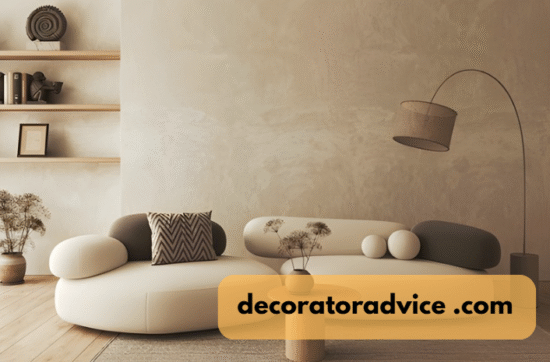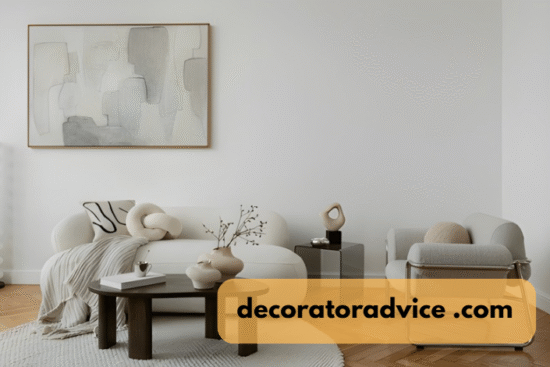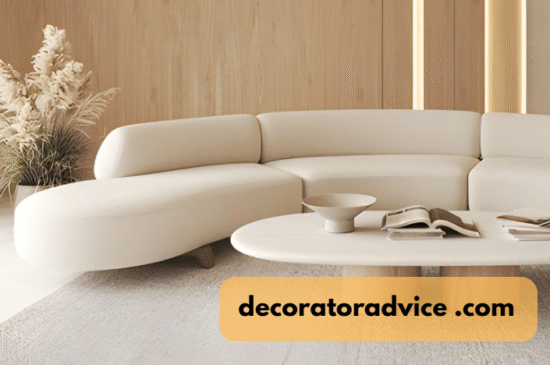Decoratoradvice .com: Your Complete Guide to Home Styling
If you want straightforward advice to style your home, start with Decoratoradvice .com. This site collects practical ideas and clear how-to guides. It shows ways to pick paints, place furniture, and add personal touches without waste. The tone stays friendly but honest. This article explains what Decoratoradvice .com offers.
It shows how to use site tools and apply the advice in real rooms. You will find steps to plan a budget, pick colors, arrange furniture, layer texture, and care for small spaces and outdoor areas. Where useful, I note tips that are often missing from similar articles. The goal is to make styling simple and doable with what you already own. The same approach works when you explore https//decoratoradvice.com for quick and real solutions.
Why Decoratoradvice .com matters for home styling

Many readers want ideas that are both attractive and usable. Decoratoradvice delivers tips that focus on everyday life at home. The site mixes room guides, project plans, and DIY suggestions. It leans toward solutions that fit common budgets and real schedules. You will find articles that explain how to layer textiles, where to add task lighting, and how to protect floors during a project. The site also posts pieces on outdoor rooms and seasonal updates.
This mix helps people make choices that last and that suit busy households. The tone is practical. Advice targets problems people actually face while living in their homes. This makes the site useful when you need a quick, reliable fix or a simple upgrade. The latest decoratoradvice .com section often highlights new design ideas worth trying.
Getting started with style and budget
Good results start with two simple steps. Define what you want from a room. Decide what you will use it for most hours of the day. The second step is a budget that matches that use. Decoratoradvice .com suggests setting a clear priority list. Spend more on the pieces you touch daily. Save on extras that only appear during visits. Plan in phases so The expense might be spread out over time.
The site uses straightforward examples to show how to split a budget. It shows how a small spend on lighting can feel like a big upgrade. It also warns against buying trendy items that will feel tired quickly. These useful guidelines assist you in avoiding costly errors. When you start with purpose and money limits the rest, it falls into place. Use room sketches, photos, or a rough measurement to guide purchases. This step makes the work efficient and less stressful.
Color palettes, paint, and mood

Color defines the feel of a space. Choose a primary hue that establishes the mood. Add two supporting colors to create depth. Decorator advice walks readers through simple ways to test paint without full commitment. The site shows how natural light changes a shade across the day. It encourages trying paint swatches on larger sheets instead of tiny chips. The guide explains how warm tones make rooms feel cozy.
Cool tones make rooms feel calm. It also covers how to use accent walls without overwhelming a small room. The site stresses balance so a bold choice does not become a regret. Practical advice includes pairing paint with textiles and flooring for a consistent effect. These methods reduce guesswork when choosing color and increase the chance you will love the result long-term. The guides on decoratoradvice.com often show real homes where simple paint changes make big differences.
Furniture layout for flow and comfort
A thoughtful layout makes a room work. Start with the largest piece and set it where it supports how you use the room. Leave clear paths so movement feels easy. Decorator advice .com explains how to measure circulation and choose sofa sizes that fit without crowding. The site gives room-by-room examples that show how to center conversation areas and keep TV spaces comfortable.
It also offers tips for small rooms, such as using furniture with open legs to create the sense of space. Lighting placement and rug sizes are paired with layout advice to make each area feel intentional. The focus stays on how people use a room rather than how it looks in a staged photo. You can find more layout guides in the decoratoradvice .com home section.
Accessories, texture, and personal touches

Accessories create personality. To increase warmth, layer fabrics such as pillows and throw blankets. Use a mix of finishes to keep a room interesting. Decoratoradvice .com shows how to pick objects that matter and avoid clutter. It encourages choosing a few meaningful items that reflect your life. The guidance covers scale and balance so small items do not get lost.
It also covers placing art at the correct eye height and grouping objects to form visual sets. The site offers simple rules for mixing metal tones and combining patterns. These rules help people craft a collected look without feeling like a showroom. The outcome is a house that appears well-curated but is actually inhabited. Some of these ideas come from about us decoratoradvice .com, where the team explains how personal style grows through lived experience.
Styling small spaces on a tight budget
Small rooms can feel larger with few changes. Choose multifunctional furniture and reduce visual clutter. Decoratoradvice .com highlights thrift and upcycle options that save money. It explains when to invest and when to DIY. Examples show how a fresh coat of paint, a new rug, and better lighting can transform a small room at a modest cost.
The site also demonstrates quick fixes such as swapping hardware on cabinets and reupholstering a chair rather than replacing it. These moves extend the value of existing pieces. For many readers the biggest win is using what they already own while making targeted changes to key elements. This approach protects budgets and produces clear, visible results. Similar thinking is shared in decoradhouse renovation tips from decoratoradvice that focus on smart, low-cost improvements.
Outdoor and transitional spaces

Outdoor rooms extend living space. Treat them like indoor rooms with layers of texture and clear function. Decorator advice shows how to choose weather-resistant fabrics and how to arrange seating for conversation. It also addresses simple maintenance so outdoor styling lasts through seasons. Lighting and rugs designed for outdoors can define zones and add comfort.
The site recommends durable finishes near entries and softer elements in covered areas. These choices keep outdoor spaces useful and friendly for daily use. Small upgrades such as adding plants in well-chosen pots make patios feel finished without a large investment. The goal is to make outdoor spots work more often and feel part of the home. Readers who want deeper context can read about decoratoradvice .com to learn how the team builds practical advice for everyday homes.
Functional design storage, lighting, and utility areas
Function matters as much as looks. Smart storage keeps a home tidy and calm. Decorator advice explains built-in and freestanding options that fit budgets and layouts. It covers simple retrofits such as adding shelves inside closets and using vertical space in kitchens.
Lighting advice covers task lighting for work zones and softer layers for relaxing. The site recommends adjusting lighting to the task rather than using one bright overhead source. It also suggests ways to hide or style utility items so they blend with decor. These doable actions enhance everyday living and lessen conflict in a hectic home. A house that feels more comfortable to live in is the outcome. You can find links to similar guides through decoratoradvice com where storage and lighting get their own focus pages.
Trends versus timeless choices
Trends are useful when applied with restraint. Invest in classic pieces that hold up to year-to-year changes. Use trends for accents that are easy to update. Decorator advice encourages readers to pick timeless foundations and add seasonal accessories for freshness. This method reduces waste and cost. The site offers examples where a neutral sofa stays relevant for years while pillows and art give seasonal updates. Choosing fewer high-quality items in core positions pays off over time. This mindset supports sustainable choices and creates a stable look that can evolve without major expense.
How to use Decoratoradvice .com for your project
Start with the site home page to find room guides and how-to articles. Save pages that match your style and budget. Use their photo examples to build a mood board. Make a project checklist that names one task per week. Track progress with photos so you can compare before and after. Decorator advice includes DIY articles and shopping tips that help with each step. Use those guides to avoid common mistakes and to keep the project moving. The key is to act in small phases so changes do not overwhelm daily life. This step-by-step approach makes big goals feel manageable and keeps costs steady.
Bringing it all together and next steps
A finished home starts with clear choices and small actions. Use the rules you prefer and ignore the rest. Keep items that serve you and donate what does not. One room at a time is enough to change how your home feels. Use Decorator Advice to learn practical techniques and to see applied examples. Take photos during the process and note what worked. Over time your home will feel more coherent and more yours. Small regular improvements add up.
Final Terms
Good design is clear choice and careful execution. Decoratoradvice .com offers direct advice that supports both. The site helps readers make decisions that feel right at home. Use it to plan projects, refine color choices, and arrange rooms that work for daily life.







